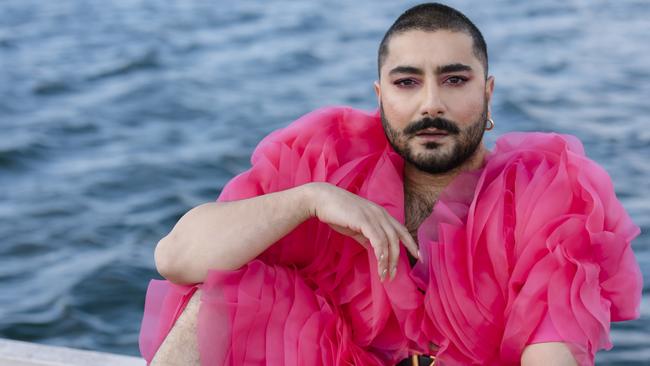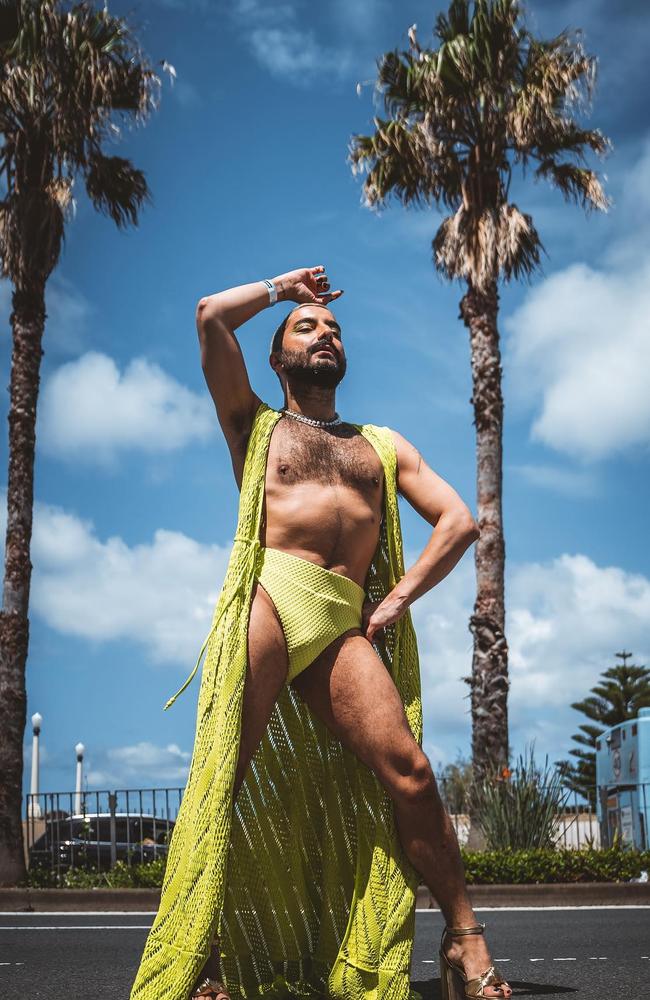Susie O’Brien: Seafolly’s woke campaign with Deni Todorovic more controversial than inclusive
Making a transgender, non-binary activist the face of a women’s swimwear brand is just courting controversy for the sake of it.

Susie O'Brien
Don't miss out on the headlines from Susie O'Brien. Followed categories will be added to My News.
A transgender non-binary activist has become the latest face of Australian swimwear brand Seafolly.
It’s a far cry from the winsome, white, female models the company normally uses.
Deni Todorovic, a bearded activist, was assigned male at birth, uses they/them pronouns and identifies as non-binary and transgender.
They were in the media this week reminding people that “some women do have penises”.
Exactly how many women have penises? Not many, I’d guess.
I am sure there are a few people out there who fit into the chicks with, ahem, dicks category.
But it’s hard to see how photos of Todorovic in citrus bikini bottoms and high heels will appeal to the company’s core demographic of middle-class women.
Seafolly is an up-market swimwear brand where a basic bikini will set you back $100 and a fancy one-piece up to $200.
I have to admit the images leave me — a cisgender woman (a biological female who has a female gender identity) — feeling a bit left out.

Shocking gender-bender exhibitionism generates social media chatter and headlines, but showing female clothing on what is a traditionally male body – resplendent in its hairy glory – is just courting controversy for the sake of it.
There is a need to ensure a wider diversity of images are used in marketing, and the trans community is having a well-deserved moment in the sun.
But let’s not kids ourselves that the majority of customers for Seafolly are men with beards, penises and hairy legs.
They’re women who want to be women (including some who may have been born males).
I’d welcome a brand like this using transgender models if the commitment was more than just exhibitionism.
For example, if they offered larger sizes or more diversity in their range.
But middle-of-the-road brands using overt sexual confusion in a bid to get attention leaves me cold.
It didn’t help that the campaign was launched the day before International Women’s Day on March 8.
While the Mardi Gras fabulousness of the moment fits last week’s Sydney parade, it doesn’t translate that well to a day celebrating women.
One critic of the campaign, author Alexandra Marshall, said she felt like the brand was mocking women and vowed never to buy Seafolly again. Another said the brand “deserves to be cancelled by real women”.
Todorovic hit back at the critics and said it’s about “authentic allyship”.
Seafolly responded to the controversy, saying it wants to “celebrate the Australian beach lifestyle and inspire one another to feel confident at the beach”.

These are worthy goals, of course, but I don’t see how images of an obviously male body wearing women’s swimwear help the majority of women feel confident at the beach.
It comes as a time when some people are finding it hard to define what a woman is.
To be honest, it shouldn’t be that hard: a female adult who was born, or defines, as a female.
Todorovic, for all of their Mardi Gras glamour, doesn’t seem to sit into either category, so it’s hard to know why they are modelling women’s swimwear.
We’re in an era where one of the biggest pop stars in the world, Harry Styles, refuses to label his sexuality and is overtly gender fluid in his dressing and style.
Call it a sign of the times.
I welcome gender and sexual diversity and have no problem with brands using transgender women and men in their campaigns. Why not? They’re customers too.
For instance, I love that US chocolate company Hershey has just released the “Her for She” video. It features a trans advocate, Fae Johnstone, calling for people to live as their “authentic selves”.
But I can’t see how the Seafolly campaign featuring Todorovic is serving most members of the trans community, who are doing their best to fit in, look like, and be accepted as women.
It feels like Todorovic is mocking transgender women who often confront shocking prejudice in their daily lives.
Unlike the Hershey campaign, this is less about pioneering pride and inclusion and more about shocking people for the sake of headlines.
I have no problem with Todorovic, who is also a Bonds ambassador, having his moment in the sun.
But brands such as Seafolly should not leave behind women who make up the vast majority of their customer base.
I’ll still buy Seafolly – when it’s on sale – but despite this campaign, not because of it.





